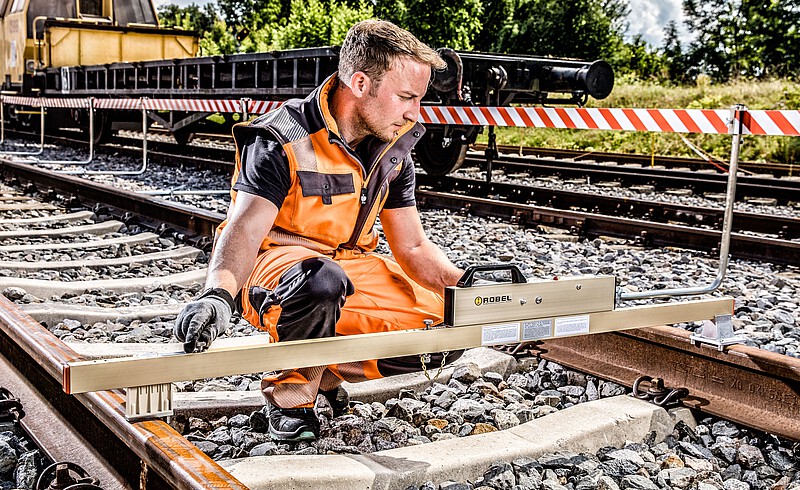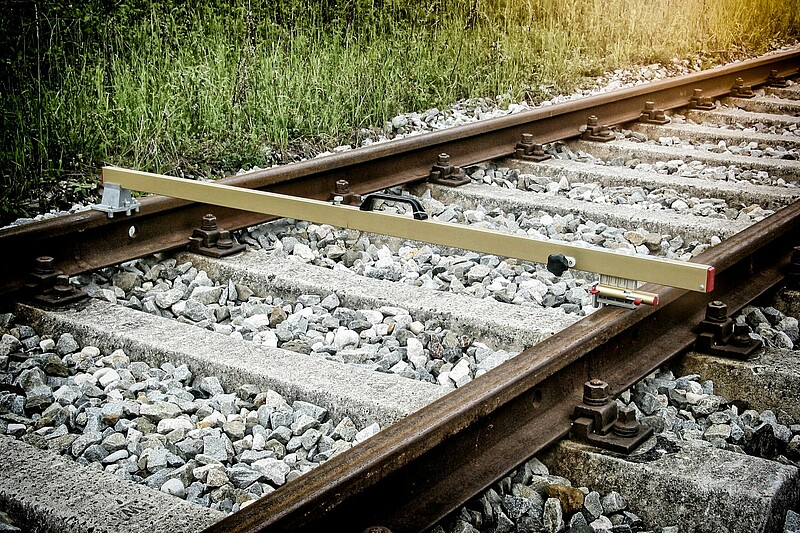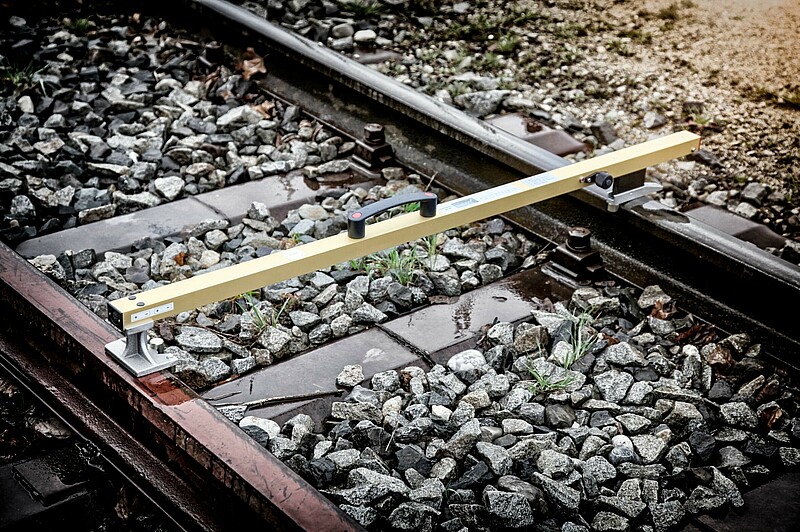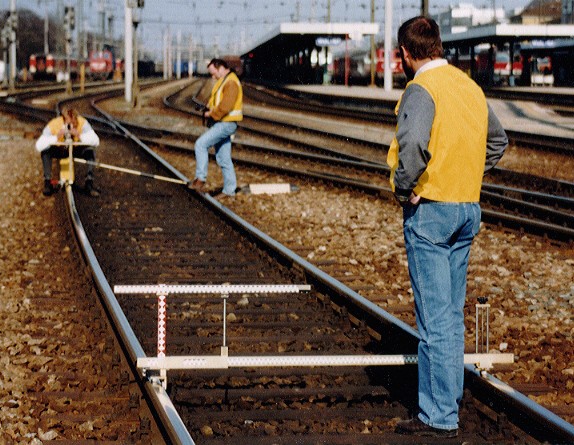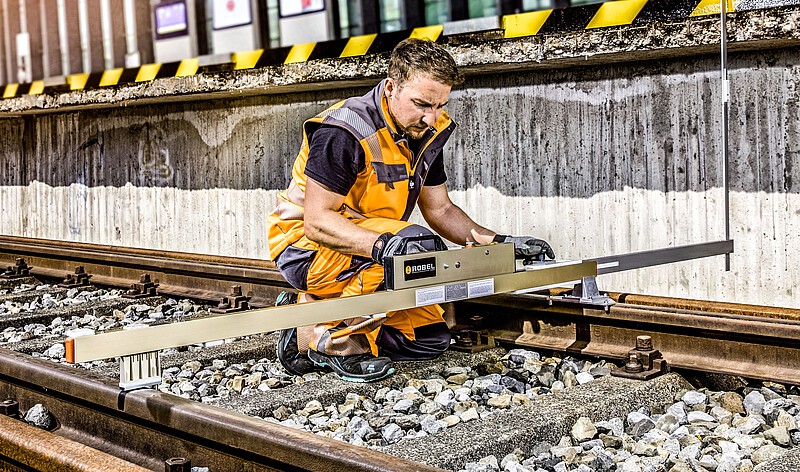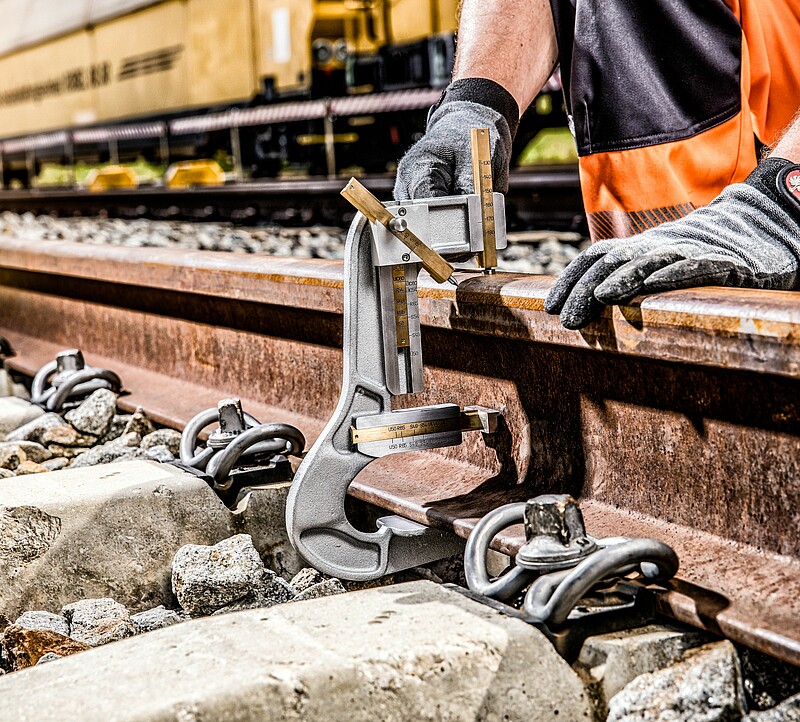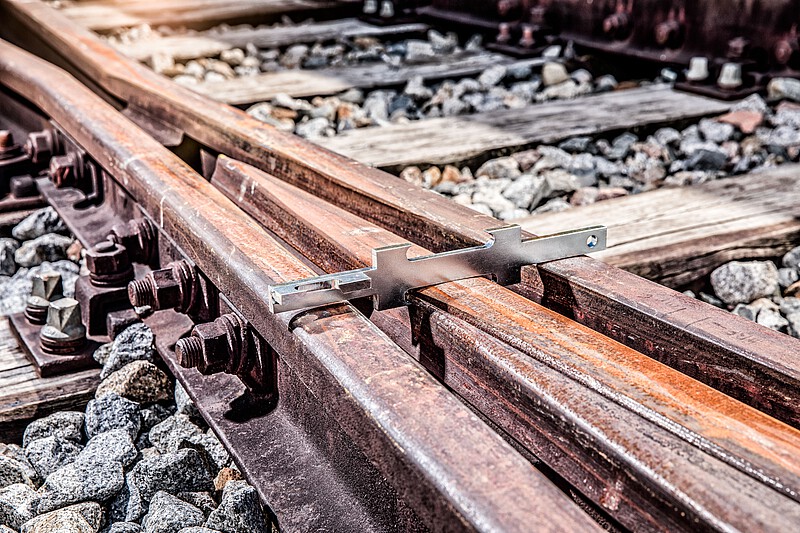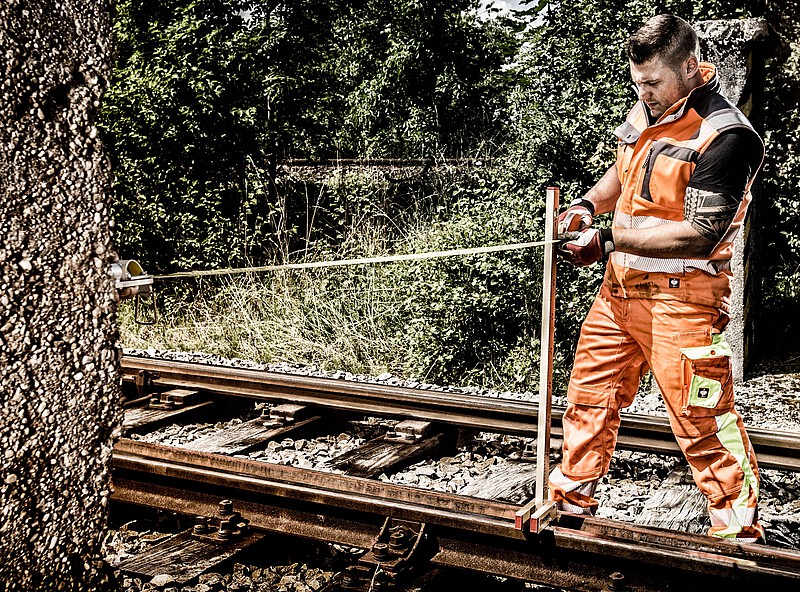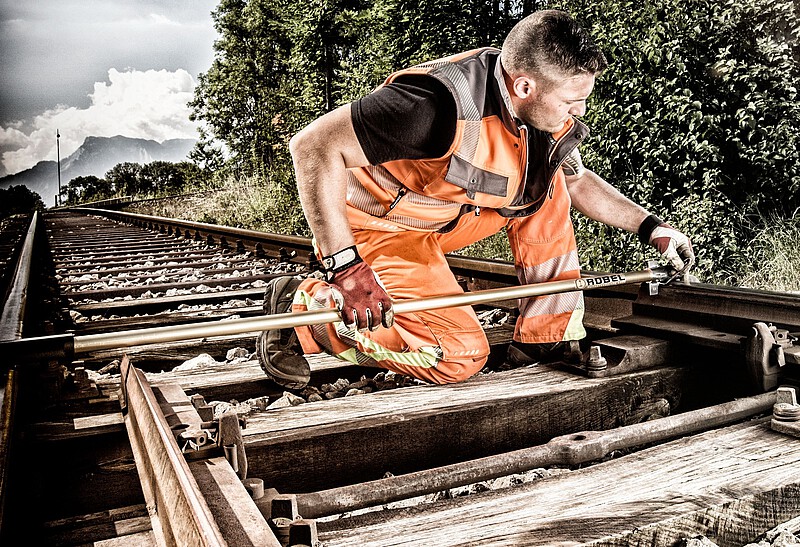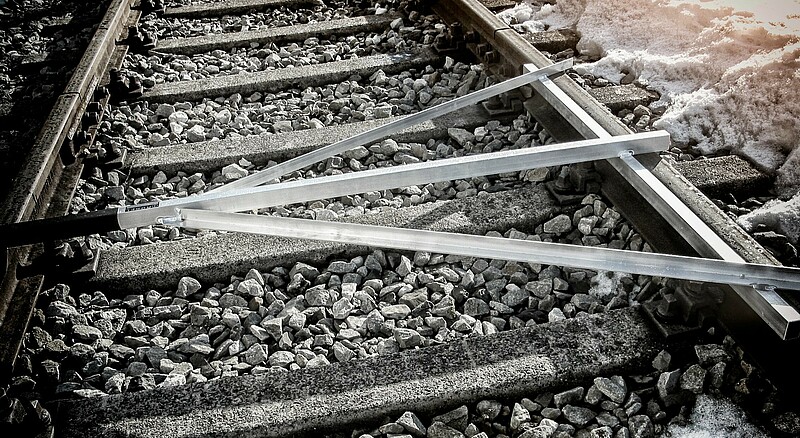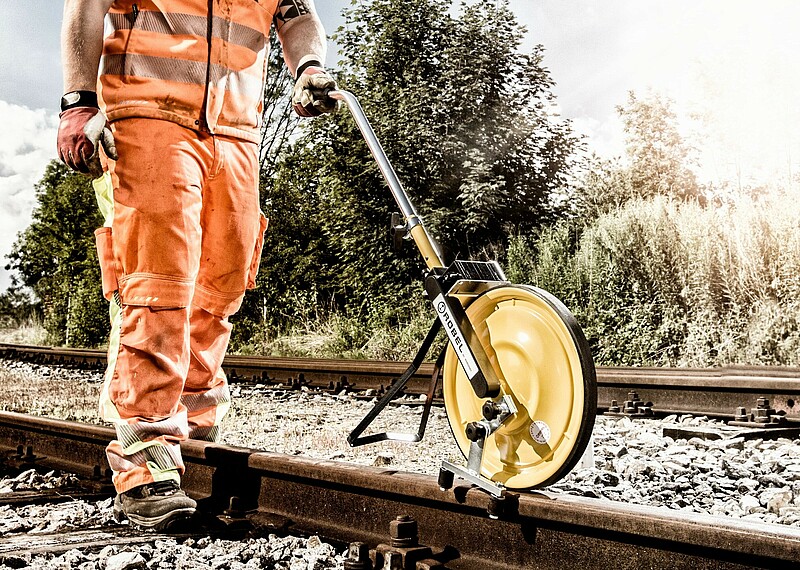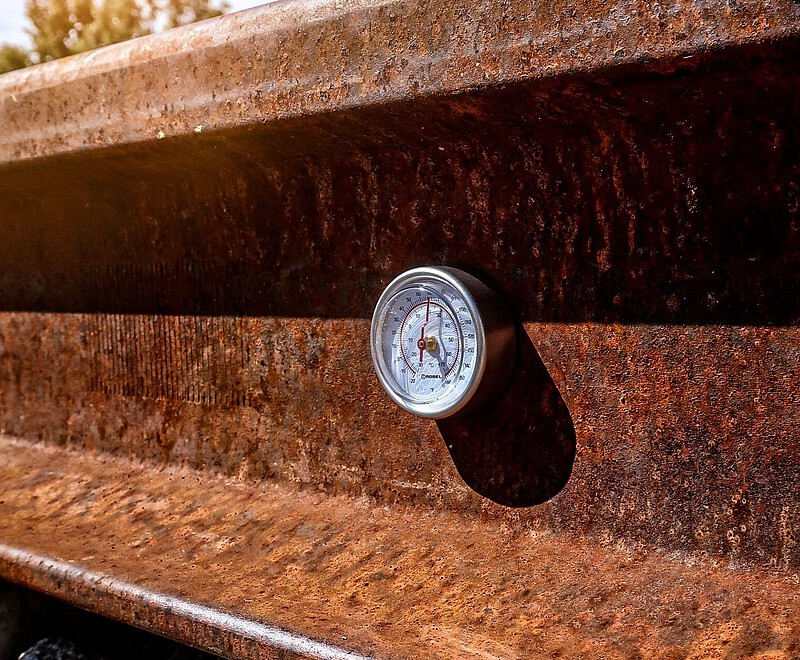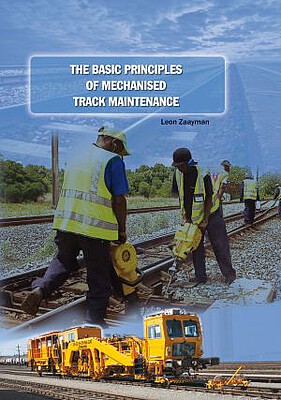Measuring and testing equipment
Track gauge and superelevation measuring device
A measuring device that is frequently used in track laying, is the so-called superelevation measure. The correct term “track gauge and superelevation measuring device” describes what it does.
Functions:
- track gauge: –10 mm to +40 mm
- superelevation: –30 mm to +200 mm
- reading accuracy: 1 division = 1 mm
Switch gauge and superelevation measuring device
The universal measuring device, which is, in particular, used in turnouts, is the so-called turnout gauge. This is used to measure the track gauge, check-rail gauge, check-rail guide face, flange groove and superelevation.
Measuring range:
- track gauge: 1,435 mm –10 mm up to +40 mm
- check rail gauge: 1,394 mm –10 mm to +10 mm
- flangeway (2nd check rail gauge): 1,332 mm to 1,365 mm
- flange groove: 31 mm to 60 mm
- measurement accuracy: +/– 0.5 mm
Hand-held measuring device for the determination of level and line faults of the track
Before some devices and methods for the alignment and height measurements are shown, for information purposes, it is important to note an important criterion for the different measuring methods: All these measurements are measurements of the track in an unloaded condition. This is important because in more and more railway administrations measurements are required of the loaded track in accordance with the new and modern technical standards.
Alignment measurements
The alignment of the track is generally determined by a chord measurement. It is necessary to make a distinction between concentric and eccentric measurements.
String chord
Basically, concentric measurements are carried out on 10 or 20 metre long chords, adjusted to the radius of the track.
A variant of the device is the fixed string chord. This was formerly used for eccentric measurements with larger chord lengths (20 to 50 m).
Loading gauge profile measuring device
Since string chord measurement is susceptible to weather conditions, in many railway administrations the optical method of versine measurement is preferred.
Advantage:
- independent of weather conditions
- more precise measurements by optics compared to string measurement
- suitable for lining measurements in the curve and when leaving tangent track
Height measurement
Height measurement is carried out either by line of sight or by levelling measurements.
In the line of sight measurement both the optical view finder and the graduated ruler are set up on the rail.
For measurements in turnouts, a levelling device is generally used.
Loading gauge profile measuring device
The distance from the centre line of the track to the station platform (ramp) and the height from top of rail to platform edge or loading bay is measured with this device.
Rail head wear measuring device
This device is used to measure the vertical and lateral rail wear. Measurements can be made at 22.5°, 45° and 67.5° to the rail centre axis.
Measuring point button
Rail crossings must be repaired by welding on a regular basis because of their heavy loading and the associated wear. This so-called build-up welding requires accurate measurements on the crossing nose.
Track fixed point-measuring device
Suitable for the measurement of distances from objects or fixed points such as masts, signal posts, concrete walls, etc. Is used to determine the track geometry as well as for the verification of individual high values with an appropriate yardstick.
Rail gap measuring wedge
The gap and thus the distance between the rail ends are measured with this device.
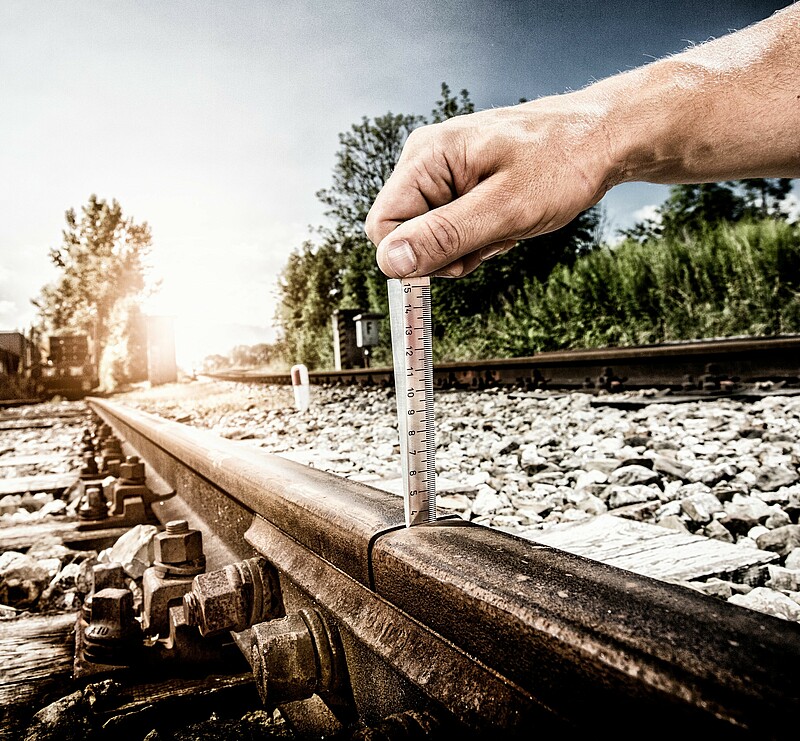
© Robel Bahnbaumaschinen GmbH
Stock rail and turnout tongue test gauge
With this device worn out places can be measured in the tongue area.
Track angle
Device for the exact calibration of fixed points and other measurement points that require an accurate, right-angled position.
Rail length measuring wheel
The rail length measuring wheel is suitable for the measurement of lengths. This gives guidance on the rail.
Rail adhesive thermometer
The rail adhesive thermometer is suitable for measuring the rail temperature.
You can find suitable specialist literature to the topic here:
The Basic Principles of Mechanised Track Maintenance
This book is dedicated to the many people involved in the day to day planning and performance of track maintenance activities. Providing a practical approach to everyday challenges in mechanised track maintenance, it is not just intended as a theoretical approach to the track system.
Railways aim at transporting people and freight safely, rapidly, regularly, comfortably and on time from one place to another. This book is directed to track infrastructure departments contributing to the above objective by ensuring the track infrastructure’s reliability, availability, maintainability and safety – denoted by the acronym RAMS. Regular, effective and affordable track maintenance enable RAMS to be achieved.

